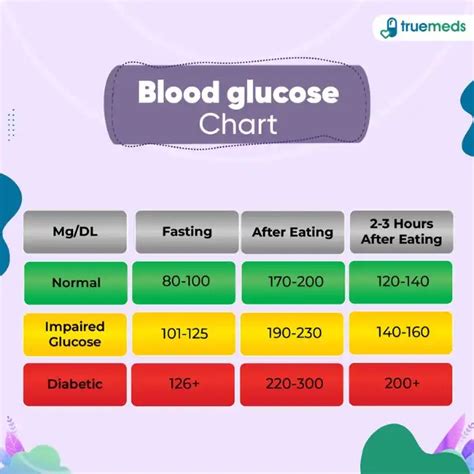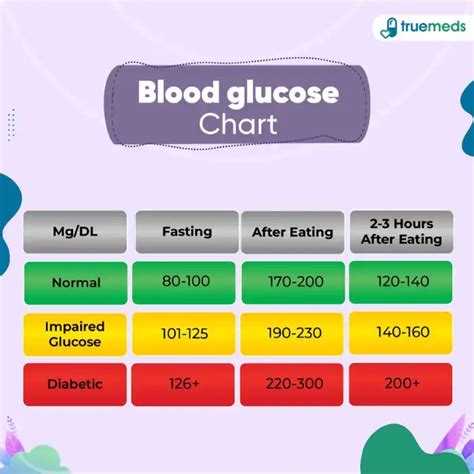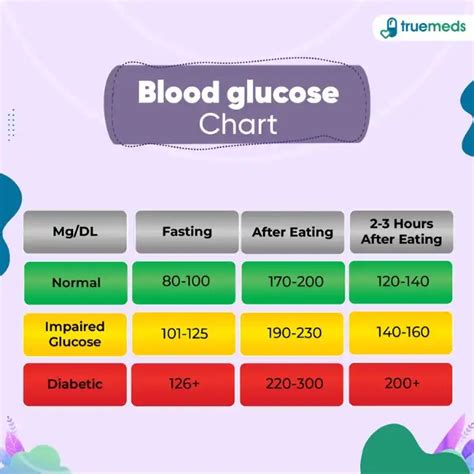Intro
Discover the normal glucose range for adults, including fasting and post-meal blood sugar levels, and learn how to maintain healthy glucose levels, preventing hyperglycemia and hypoglycemia.
Maintaining a healthy blood glucose level is crucial for overall well-being, particularly for adults. The normal glucose range for adults is a topic of significant interest, as it helps individuals understand their body's condition and take necessary measures to prevent or manage diabetes and other related health issues. In this article, we will delve into the importance of knowing the normal glucose range, its benefits, and the steps to maintain a healthy blood sugar level.
Understanding the normal glucose range is essential for adults, as it enables them to identify potential health risks and take preventive measures. The American Diabetes Association (ADA) provides guidelines for normal blood glucose levels, which serve as a benchmark for adults to assess their health. By being aware of the normal glucose range, adults can make informed decisions about their lifestyle, diet, and exercise routine, ultimately reducing the risk of developing diabetes and related complications.
The significance of maintaining a normal glucose range cannot be overstated, as it has a direct impact on overall health and well-being. When blood glucose levels are within the normal range, the body functions optimally, and the risk of developing chronic diseases, such as heart disease, kidney disease, and nerve damage, is significantly reduced. Moreover, a healthy blood glucose level enhances energy levels, improves cognitive function, and supports a strong immune system. As we explore the topic further, we will discuss the benefits, working mechanisms, and steps to maintain a normal glucose range, providing valuable insights for adults seeking to prioritize their health.
Understanding Normal Glucose Range

To comprehend the normal glucose range, it is essential to understand how blood glucose levels are measured and interpreted. The ADA recommends the following blood glucose targets for adults: a fasting plasma glucose level of less than 100 mg/dL and a postprandial (after meal) glucose level of less than 140 mg/dL. These targets serve as a benchmark for adults to assess their blood glucose levels and make necessary adjustments to their lifestyle and diet. By understanding the normal glucose range, adults can identify potential health risks and take preventive measures to maintain optimal health.
Importance of Blood Glucose Monitoring
Blood glucose monitoring is a crucial aspect of maintaining a normal glucose range. Regular monitoring enables adults to track their blood glucose levels, identify patterns, and make informed decisions about their diet, exercise, and medication. The ADA recommends that adults with diabetes or prediabetes monitor their blood glucose levels at least once a day, while those with normal glucose levels should monitor their levels periodically to ensure they remain within the target range. By monitoring blood glucose levels, adults can:- Identify potential health risks and take preventive measures
- Adjust their diet and exercise routine to maintain optimal health
- Monitor the effectiveness of their medication or treatment plan
- Make informed decisions about their lifestyle and health
Benefits of Maintaining Normal Glucose Range

Maintaining a normal glucose range offers numerous benefits for adults, including:
- Reduced risk of developing diabetes and related complications
- Improved energy levels and cognitive function
- Enhanced immune system function
- Reduced risk of heart disease, kidney disease, and nerve damage
- Improved overall health and well-being
By maintaining a normal glucose range, adults can reduce their risk of developing chronic diseases and improve their overall quality of life. A healthy blood glucose level enables the body to function optimally, supporting physical and mental well-being.
Factors That Affect Blood Glucose Levels
Several factors can affect blood glucose levels, including:- Diet: Consuming high-sugar or high-carbohydrate foods can raise blood glucose levels
- Exercise: Regular physical activity can lower blood glucose levels
- Medication: Certain medications, such as steroids and certain psychiatric medications, can raise blood glucose levels
- Stress: Chronic stress can raise blood glucose levels
- Sleep: Poor sleep quality or duration can raise blood glucose levels
By understanding the factors that affect blood glucose levels, adults can make informed decisions about their lifestyle and take necessary measures to maintain a normal glucose range.
Steps to Maintain Normal Glucose Range

To maintain a normal glucose range, adults can follow these steps:
- Eat a healthy diet: Focus on consuming whole, unprocessed foods, such as vegetables, fruits, whole grains, lean proteins, and healthy fats.
- Stay hydrated: Drink plenty of water throughout the day to help regulate blood glucose levels.
- Exercise regularly: Engage in at least 150 minutes of moderate-intensity aerobic exercise, or 75 minutes of vigorous-intensity aerobic exercise, or a combination of both, per week.
- Get enough sleep: Aim for 7-8 hours of sleep per night to help regulate blood glucose levels.
- Manage stress: Engage in stress-reducing activities, such as yoga, meditation, or deep breathing exercises.
- Monitor blood glucose levels: Regularly monitor blood glucose levels to track progress and make informed decisions about lifestyle and treatment.
By following these steps, adults can maintain a normal glucose range and reduce their risk of developing diabetes and related complications.
Practical Tips for Maintaining Normal Glucose Range
In addition to the steps outlined above, here are some practical tips for maintaining a normal glucose range:- Keep track of carbohydrate intake: Use a food diary or mobile app to track carbohydrate intake and make informed decisions about food choices.
- Choose low-glycemic index foods: Focus on consuming foods with a low glycemic index, such as whole grains, fruits, and vegetables, to help regulate blood glucose levels.
- Incorporate physical activity into daily routine: Engage in physical activity, such as walking or stretching, throughout the day to help lower blood glucose levels.
- Get enough fiber: Aim for 25-30 grams of fiber per day to help regulate blood glucose levels and support overall health.
By incorporating these practical tips into daily life, adults can maintain a normal glucose range and reduce their risk of developing diabetes and related complications.
Conclusion and Next Steps

In conclusion, maintaining a normal glucose range is crucial for overall health and well-being. By understanding the normal glucose range, monitoring blood glucose levels, and making informed decisions about lifestyle and diet, adults can reduce their risk of developing diabetes and related complications. We encourage readers to take the next step in prioritizing their health by:
- Consulting with a healthcare provider to discuss individual blood glucose targets and develop a personalized treatment plan
- Incorporating healthy lifestyle habits, such as regular exercise and a balanced diet, into daily life
- Staying informed about the latest research and guidelines on blood glucose management
By working together, we can promote healthy blood glucose levels and reduce the risk of chronic diseases.
What is the normal glucose range for adults?
+The normal glucose range for adults is a fasting plasma glucose level of less than 100 mg/dL and a postprandial (after meal) glucose level of less than 140 mg/dL.
How often should I monitor my blood glucose levels?
+The American Diabetes Association recommends that adults with diabetes or prediabetes monitor their blood glucose levels at least once a day, while those with normal glucose levels should monitor their levels periodically.
What are the benefits of maintaining a normal glucose range?
+Maintaining a normal glucose range offers numerous benefits, including reduced risk of developing diabetes and related complications, improved energy levels and cognitive function, and enhanced immune system function.
